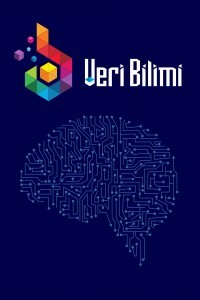Önerilen Yapay Sinir Ağı Algoritması ile Ortaokul Öğrencilerin Akademik Performansının Tahmini
Eğitsel Veri Madenciliği, Yapay Sinir Ağları, Rastgele Arama
Prediction of Secondary School Students' Academic Performance with Proposed Artificial Neural Networks Algorithm
___
- Abdullah, A., BEŞERİ SERMAYENİN KALKINMA ÜZERİNE ETKİSİ. Uluslararası Ekonomi Siyaset İnsan ve Toplum Bilimleri Dergisi. 1(1): p. 28-34.
- Kayadibi, F., Eğitim kalitesine etki eden faktörler ve kaliteli eğitimin üretime katkısı. İstanbul Üniversitesi İlahiyat Fakültesi Dergisi, 2001(3).
- Romero, C. and S. Ventura, Educational data mining and learning analytics: An updated survey. Wiley Interdisciplinary Reviews: Data Mining and Knowledge Discovery, 2020. 10(3): p. e1355.
- Salloum, S.A., et al. Mining in Educational Data: Review and Future Directions. in Joint European-US Workshop on Applications of Invariance in Computer Vision. 2020. Springer.
- Peña-Ayala, A., Educational data mining: A survey and a data mining-based analysis of recent works. Expert systems with applications, 2014. 41(4): p. 1432-1462.
- Shahiri, A.M. and W. Husain, A review on predicting student's performance using data mining techniques. Procedia Computer Science, 2015. 72: p. 414-422.
- Satyanarayana, A. and M. Nuckowski, Data mining using ensemble classifiers for improved prediction of student academic performance. 2016.
- Chaudhury, P., et al. Enhancing the capabilities of student result prediction system. in Proceedings of the Second International Conference on Information and Communication Technology for Competitive Strategies. 2016.
- Salal, Y., S. Abdullaev, and M. Kumar, Educational Data Mining: Student Performance Prediction in Academic. IJ of Engineering and Advanced Tech, 2019. 8(4C): p. 54-59.
- Hamoud, A., Selection of best decision tree algorithm for prediction and classification of students’ action. American International Journal of Research in Science, Technology, Engineering & Mathematics, 2016. 16(1): p. 26-32.
- Pojon, M., Using machine learning to predict student performance. 2017.
- Başer, S.H., O. Hökelekli, and A. Kemal, Ortaöğretimde Öğrenim Gören Öğrenci Performanslarının Veri Madenciliği Yöntemleri İle Tahmin Edilmesi. Bilgisayar Bilimleri ve Teknolojileri Dergisi. 1(1): p. 22-27.
- Ünal, F., Data Mining for Student Performance Prediction in Education, in Data Mining-Methods, Applications and Systems. 2020, IntechOpen.
- Athani, S.S., et al. Student academic performance and social behavior predictor using data mining techniques. in 2017 International Conference on Computing, Communication and Automation (ICCCA). 2017. IEEE.
- Ma, X. and Z. Zhou. Student pass rates prediction using optimized support vector machine and decision tree. in 2018 IEEE 8th Annual Computing and Communication Workshop and Conference (CCWC). 2018. IEEE.
- Troussas, C., M. Virvou, and S. Mesaretzidis. Comparative analysis of algorithms for student characteristics classification using a methodological framework. in 2015 6th International Conference on Information, Intelligence, Systems and Applications (IISA). 2015. IEEE.
- Singh, M., et al. Towards enthusiasm prediction of Portuguese school's students towards higher education in realtime. in 2020 International Conference on Computation, Automation and Knowledge Management (ICCAKM). 2020. IEEE.
- Walia, N., et al., Student’s Academic Performance Prediction in Academic using Data Mining Techniques. Available at SSRN 3565874, 2020.
- Srivastava, A.K., et al., PREDICTION OF STUDENTS PERFORMANCE USING KNN AND DECISION TREE-A MACHINE LEARNING APPROACH. 2020.
- Zaffar, M., et al., Role of FCBF Feature Selection in Educational Data Mining. Mehran University Research Journal of Engineering and Technology, 2020. 39(4): p. 772-778.
- Haykin, S.S., Neural networks and learning machines/Simon Haykin. 2009, New York: Prentice Hall.
- Ataseven, B., Yapay sinir ağları ile öngörü modellemesi. 2013.
- Öztemel, E., Yapay sinir ağlari. PapatyaYayincilik, Istanbul, 2003.
- Tran, N., et al., Hyper-parameter optimization in classification: To-do or not-to-do. Pattern Recognition, 2020. 103: p. 107245.
- Young, S.R., et al. Optimizing deep learning hyper-parameters through an evolutionary algorithm. in Proceedings of the Workshop on Machine Learning in High-Performance Computing Environments. 2015.
- Syarif, I., A. Prugel-Bennett, and G. Wills, SVM parameter optimization using grid search and genetic algorithm to improve classification performance. Telkomnika, 2016. 14(4): p. 1502.
- Cortez, P. and A.M.G. Silva, Using data mining to predict secondary school student performance. 2008.
- Bergstra, J. and Y. Bengio, Random search for hyper-parameter optimization. The Journal of Machine Learning Research, 2012. 13(1): p. 281-305.
- Erten, G.E., C.V. Deutsch, and M. Yavuz, Managing Estimation Artifacts in Machine Learning Spatial Estimation.
- BUDAK, H., Özellik Seçim Yöntemleri ve Yeni Bir Yaklaşım. Journal of Natural & Applied Sciences, 2018.
- Maxwell, A., et al., Deep learning architectures for multi-label classification of intelligent health risk prediction. BMC bioinformatics, 2017. 18(14): p. 523.
- Ohsaki, M., et al., Confusion-matrix-based kernel logistic regression for imbalanced data classification. IEEE Transactions on Knowledge and Data Engineering, 2017. 29(9): p. 1806-1819.
- Cabena, P., et al., Discovering data mining: from concept to implementation. 1998: Prentice-Hall, Inc.
- Gazel, S. and C.T. BATİ, Derin Sinir Ağları ile En İyi Modelin Belirlenmesi: Mantar Verileri Üzerine Keras Uygulaması. Yüzüncü Yıl Üniversitesi Tarım Bilimleri Dergisi. 29(3): p. 406-417.
- Yam, J.Y. and T.W. Chow, A weight initialization method for improving training speed in feedforward neural network. Neurocomputing, 2000. 30(1-4): p. 219-232.
- Başlangıç: 2018
- Yayıncı: Murat GÖK
Gender Classification with Low-Power Laser Signals
Nevzat OLGUN, İbrahim TÜRKOĞLU
Türkçe İşaret Dili İfadelerinin Geliştirilen İnsansı Robot ile Gerçekleştirilmesi
Ensemble NASNet Deep Feature Generator Based Underwater Acoustic Classification Model
University Students’ Privacy Concerns Towards Social Media Platforms: Whatsapp Contract Change
Derin Evrişimli Sinir Ağları Kullanarak Akciğer X-Ray Görüntülerinden COVID-19 Tespiti
Ferhat BOZKURT, Mete YAĞANOĞLU
An Approach for Airfare Prices Analysis with Penalized Regression Methods
Selim BUYRUKOĞLU, Yıldıran YILMAZ
Beren GÜRSOY, Selin SONER KARA
Acente Performans Ölçümleme Çalışması
Önerilen Yapay Sinir Ağı Algoritması ile Ortaokul Öğrencilerin Akademik Performansının Tahmini
